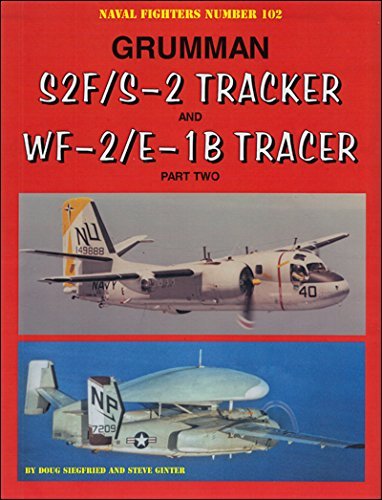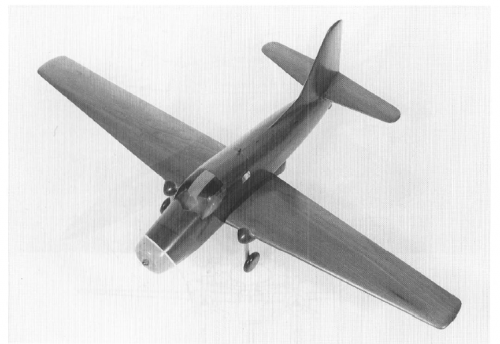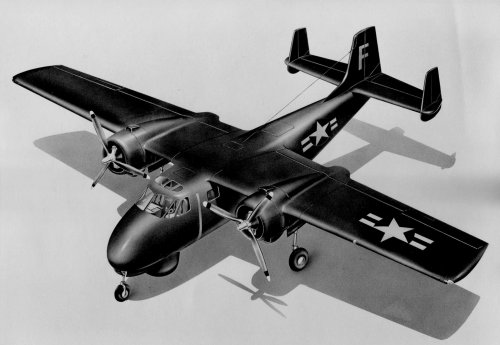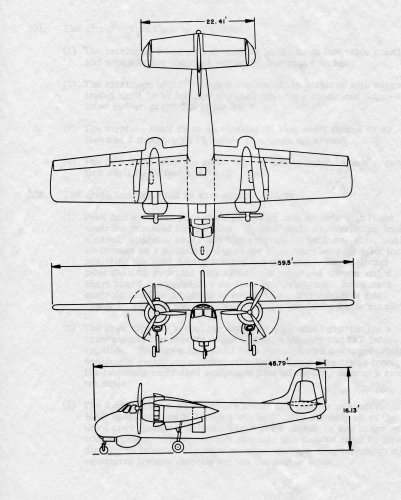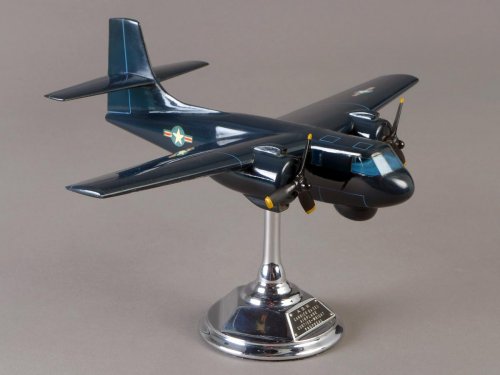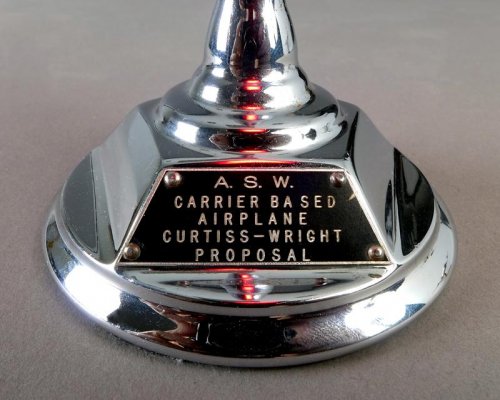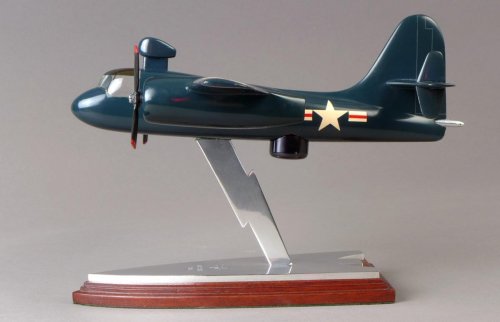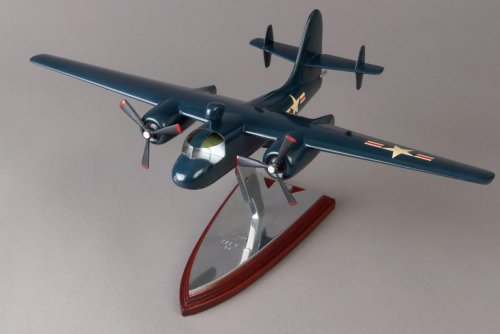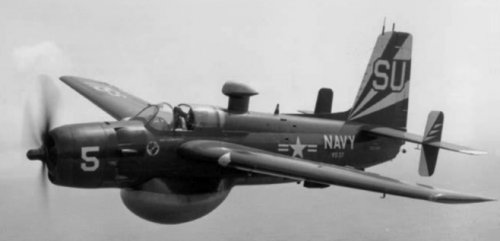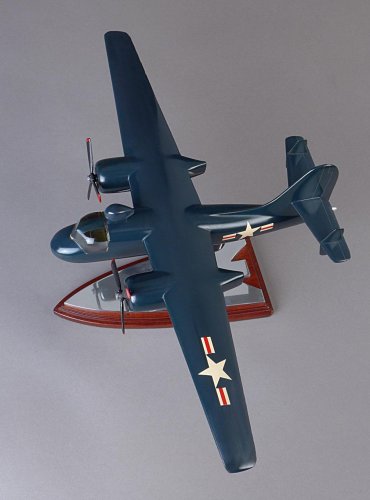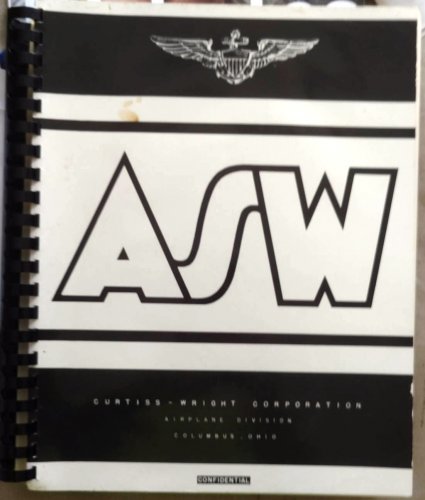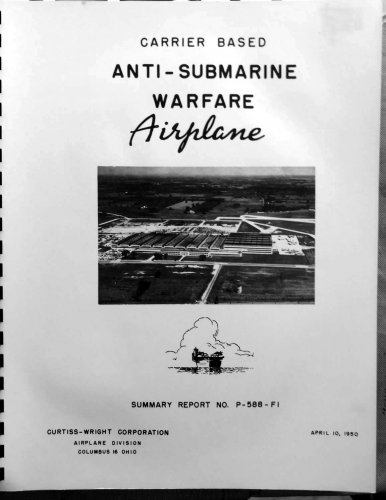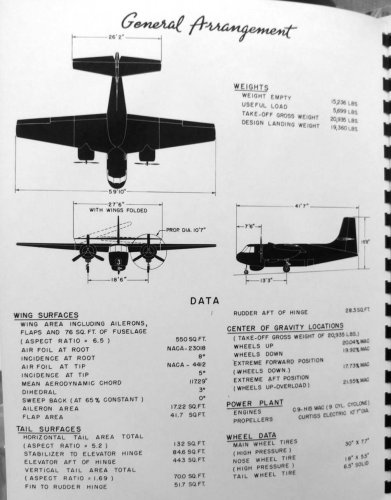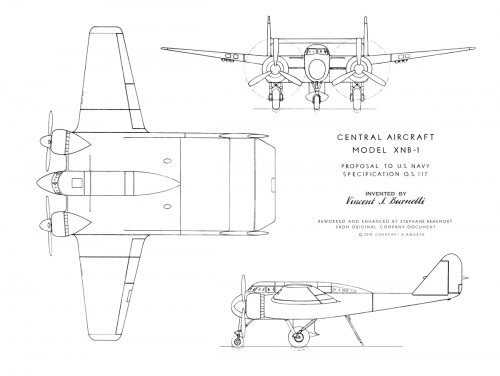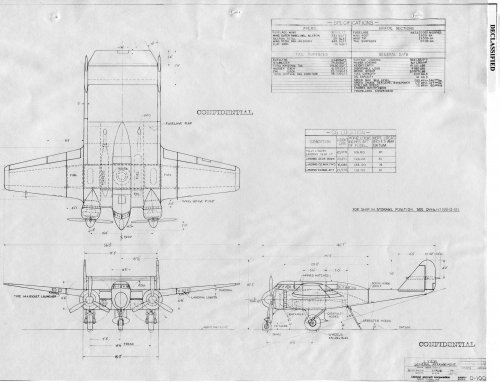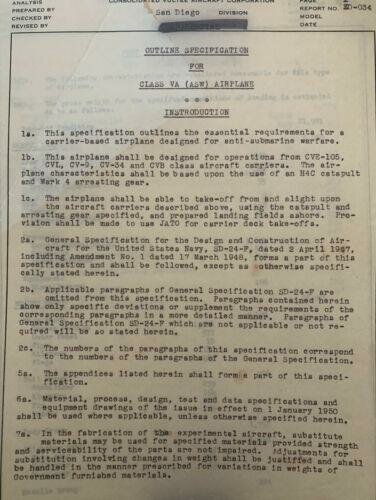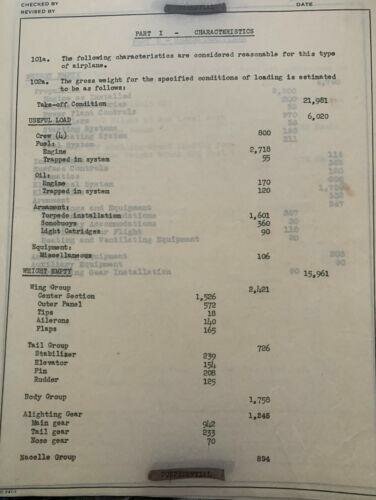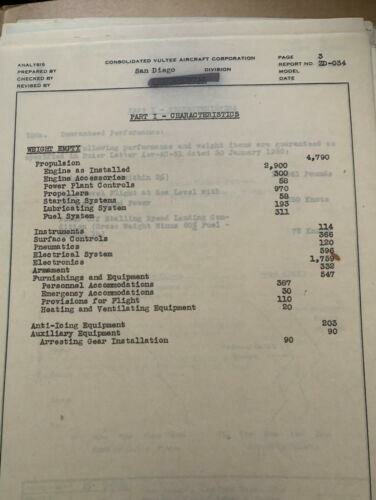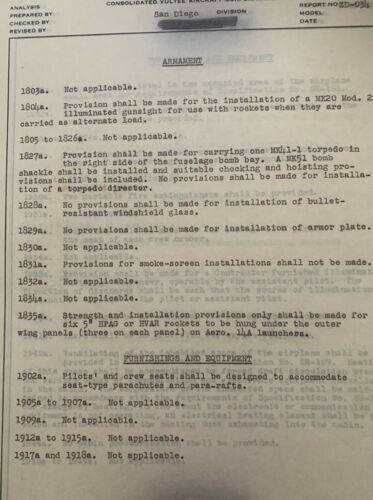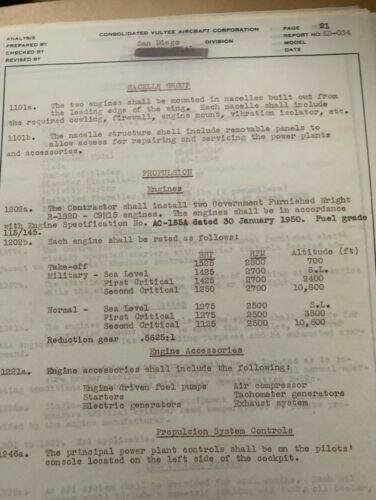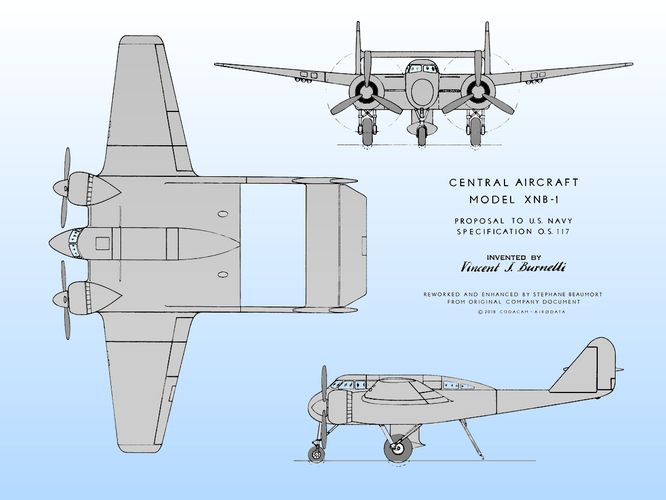You are using an out of date browser. It may not display this or other websites correctly.
You should upgrade or use an alternative browser.
You should upgrade or use an alternative browser.
US Navy OS-117 Outline Specification (S-2 Tracker rivals)
- Thread starter devi
- Start date
- Joined
- 26 May 2006
- Messages
- 34,864
- Reaction score
- 15,725
lark said:Central proposal is mentioned by Tailspin Turtle
as a Burnelli design - Burnelli projects reply# 57...
That's right my dear Lark,
and as you see in Aerofiles;
Central Aircraft Corp (pres: Preston M Neilson), Keyport NJ.
c.1941 = Took over former Aeromarine Co plant and was, as stated in 1942 Jane's: "... engaged in experimental and developmental work as well as ... subassemblies for other manufacturers. Its own experimental work is concerned with the development of high-speed military aircraft and this work has progressed to the point of production of wind-tunnel models."
- Joined
- 26 September 2008
- Messages
- 1,960
- Reaction score
- 746
- Joined
- 3 June 2006
- Messages
- 3,094
- Reaction score
- 3,949
Graham Summers said:Next up is a surprising entry from Cessna. The Model 306 was a twin engined design, utilising features of the Cessna civil aircraft, although the triple fin tail was expected to be needed to cope with the power of the twin R-2800 powerplants
Source: Facebook - Graham Summers - The Greatest Planes That Never Were - Pictures
Attachments
- Joined
- 13 June 2007
- Messages
- 2,173
- Reaction score
- 3,087
I second that! I plan on spending a few days in the Kansas Aviation Museum collection this Fall so now have this to look for as well!
Thanks! Mark
Thanks! Mark
These are all summarized for your convenience in my S2F monograph: http://www.ginterbooks.com/NAVAL/NF101.htmArjen said:I just spilled my tea. Great find!
And the engines in the Cessna proposal were R-1820s. Two R-2800s would have been way too much power. The triple-fin tail was to address the hangar overhead clearance and single-engine low-speed requirements.
Attachments
- Joined
- 21 May 2006
- Messages
- 3,002
- Reaction score
- 2,269
hesham said:Great find my dears Rolf and Tailspin.
I second that!!
Regards
Pioneer
- Joined
- 31 May 2009
- Messages
- 1,154
- Reaction score
- 670
Curtiss Wright proposal model of their elusive P-588, which nearly won the OS-117 ASW contest. The red lines on the insignia were hand-painted on the decals, presumably in 1947. This one was hard to find ...
Attachments
- Joined
- 13 June 2007
- Messages
- 2,173
- Reaction score
- 3,087
I'll second that - excellent find (and model!)!
Thanks! Mark
Thanks! Mark
- Joined
- 31 May 2009
- Messages
- 1,154
- Reaction score
- 670
Very interesting - the empennage has finlets like the Guardian's, which are not on any Model 89 drawing I've seen. Also it has what appears to be the later radome over the cockpit, which is similar to the one added to the AF-2W. Thanks for posting.circle-5 said:And here's the model that won OS-117: the Grumman Model 89, before it became the S-2 Tracker.
Attachments
- Joined
- 31 May 2009
- Messages
- 1,154
- Reaction score
- 670
Yes it does have some unmistakable 2-in-1 Guardian lineage, including a substantial wingspan. Not obvious on the photos: the belly radome retracts completely and the MAD boom extends. I always enjoy the styling of 1940s model stands. Here we have both an arrowhead and a lightning bolt, just in case someone at BuAer had any doubts this was a lethal airplane!
Attachments
- Joined
- 25 June 2009
- Messages
- 14,750
- Reaction score
- 6,111
I hadn't seen that P-588 document before, Ryan, it's great! How come I never find any good stuff on eBay?
(actually I sometimes do, but I have purposely given up buying from U.S. sellers because of prohibitive shipping costs)
Meanwhile, here's the Central Aircraft Corp. XNB-1 proposal, as (heavily) reworked by yours truly from the original company blueprint.
Since a lot of nonsense has been written about Central in the past (and I did, too!) the company was created circa 1936 by Vincent J. Burnelli. The old Aeromarine factory, based in Keyport, New Jersey, had become the home of Uppercu and Burnelli's successive companies: the Aeromarine-Klemm Corp. and the Uppercu-Burnelli Corp. When the partnership with Uppercu dissolved, Burnelli purchased the assets of the Uppercu-Burnelli Corp. in 1935 (through his own Burnelli Aircraft Corp., a company he kept on the side, mainly for administrative purposes it seems) and set up Central Aircraft Corp., which had its offices in New York City and continued to own the Keyport factory for a while. The president of the new company was Preston M. Neilson. Eventually, the factory was closed (some say in 1941, but I need to see a document to be sure) and the Aeromarine engine rights were sold to Lenape Aircraft & Motors, Inc.
Central conducted a lot of experimental and developmental work on the Burnelli models, first the Model 3 (which would be later built in modified form as the CBY-3 Loadmaster), but mostly military designs. Burnelli, it seems, really hoped to get a military contract to keep his business going, and in fact he almost did. Two of his proposals to the U.S. Army Air Corps (light attack bombers) actually won over those of the "established" military contractors such as Lockheed, Douglas and the others, and were about to be ordered. However, the story goes that when President Roosevelt discovered, upon signing the contract, that Burnelli's financial backer had previously backed his main Republican opponent, and collaborated with other figures he especially distrusted, he allegedly threw the pen and ordered Burnelli out of the White House. Undeterred, he went to work as a consultant for the Canadian Car & Foundry in Fort William, Ontario, for whom he designed a few transport and bomber projects, but these, too, were rejected by the U.S.A.A.F., and the R.C.A.F. or R.A.F. had enough surplus Dakotas at their disposal not to be bothered with a new type. Only the CBY-3 Loadmaster was built, and it remained a sole prototype.
At war's end, Burnelli reactivated Central Aircraft and submitted three designs to the U.S.A.A.F. in January 1947; a fighter, an attack plane and a freight carrier; they were all rejected, on grounds that better aerodynamics on recent designs by other companies ensured better speed and less drag than his designs. Despite the fact that nobody seemed to believe in his designs anymore (and that his stubborn refusal to collaborate with other companies had led him to be treated as a pariah within the profession) Burnelli continued to design aircraft as part of Central Aircraft well into the 1950s, and the XNB-1 proposal to the Navy's OS-117 specification of 1950 is proof of that. Eventually, Burnelli formed yet another association with "Slick" Goodlin circa 1960, named Burnelli Avionics Corp., which submitted designs to the U.S. Army that were rejected in favor of De Havilland's Caribou and Buffalo.
(actually I sometimes do, but I have purposely given up buying from U.S. sellers because of prohibitive shipping costs)
Meanwhile, here's the Central Aircraft Corp. XNB-1 proposal, as (heavily) reworked by yours truly from the original company blueprint.
Since a lot of nonsense has been written about Central in the past (and I did, too!) the company was created circa 1936 by Vincent J. Burnelli. The old Aeromarine factory, based in Keyport, New Jersey, had become the home of Uppercu and Burnelli's successive companies: the Aeromarine-Klemm Corp. and the Uppercu-Burnelli Corp. When the partnership with Uppercu dissolved, Burnelli purchased the assets of the Uppercu-Burnelli Corp. in 1935 (through his own Burnelli Aircraft Corp., a company he kept on the side, mainly for administrative purposes it seems) and set up Central Aircraft Corp., which had its offices in New York City and continued to own the Keyport factory for a while. The president of the new company was Preston M. Neilson. Eventually, the factory was closed (some say in 1941, but I need to see a document to be sure) and the Aeromarine engine rights were sold to Lenape Aircraft & Motors, Inc.
Central conducted a lot of experimental and developmental work on the Burnelli models, first the Model 3 (which would be later built in modified form as the CBY-3 Loadmaster), but mostly military designs. Burnelli, it seems, really hoped to get a military contract to keep his business going, and in fact he almost did. Two of his proposals to the U.S. Army Air Corps (light attack bombers) actually won over those of the "established" military contractors such as Lockheed, Douglas and the others, and were about to be ordered. However, the story goes that when President Roosevelt discovered, upon signing the contract, that Burnelli's financial backer had previously backed his main Republican opponent, and collaborated with other figures he especially distrusted, he allegedly threw the pen and ordered Burnelli out of the White House. Undeterred, he went to work as a consultant for the Canadian Car & Foundry in Fort William, Ontario, for whom he designed a few transport and bomber projects, but these, too, were rejected by the U.S.A.A.F., and the R.C.A.F. or R.A.F. had enough surplus Dakotas at their disposal not to be bothered with a new type. Only the CBY-3 Loadmaster was built, and it remained a sole prototype.
At war's end, Burnelli reactivated Central Aircraft and submitted three designs to the U.S.A.A.F. in January 1947; a fighter, an attack plane and a freight carrier; they were all rejected, on grounds that better aerodynamics on recent designs by other companies ensured better speed and less drag than his designs. Despite the fact that nobody seemed to believe in his designs anymore (and that his stubborn refusal to collaborate with other companies had led him to be treated as a pariah within the profession) Burnelli continued to design aircraft as part of Central Aircraft well into the 1950s, and the XNB-1 proposal to the Navy's OS-117 specification of 1950 is proof of that. Eventually, Burnelli formed yet another association with "Slick" Goodlin circa 1960, named Burnelli Avionics Corp., which submitted designs to the U.S. Army that were rejected in favor of De Havilland's Caribou and Buffalo.
Attachments
- Joined
- 25 June 2009
- Messages
- 14,750
- Reaction score
- 6,111
hesham said:Amazing Info my dear Skyblazer,many thanks,
and what is the source please ?.
Days of research... I cannot pinpoint a single source, but I use many period magazines, books, PDF files and so forth.
I've only skimmed the surface as this was not a topic on Burnelli, but there were many more companies that he created or was involved in since his first aircraft in 1915. I'll do a topic on Burnelli some time, but my upcoming website is clearly my priority, and I prefer to concentrate on that for now.
- Joined
- 25 June 2009
- Messages
- 14,750
- Reaction score
- 6,111
Tailspin Turtle said:A more detailed and original XNB-1 drawing...
Tailspin Turtle, that's the plan I started from, obviously. I thought we already had it in the thread... didn't we?
- You make it sound like my plan lacks detail... but that's the way I intended it to be! I wanted a simplified three-view arrangement that really showed the aircraft from the outside, the way it would have looked, without all the technical detail that is neat on a blueprint but clutters the view somehow.
- You imply that my work is not an original... but I don't think I ever pretended it was. I clearly specified I worked FROM an original plan, it's even stated on the three-view arrangement itself! I never tried to pretend otherwise (this being said, although it may not be AN original, it definitely IS original in the sense that the Burnelli OS-117 proposal has never been seen anywhere in this presentation before today...)
Last edited:
- Joined
- 22 January 2006
- Messages
- 4,216
- Reaction score
- 2,011
I highly appreciate the value of both excellent drawings:
Tailspin Turtle
original: coming from the origin, the very first source
detailed: because it offers a lot of information and the file is big in size.
Skyblazer
original: because it's your own work
detailed: it has the details pretended because it was drawn from a different purpose
Many thanks to both for sharing it with us
Tailspin Turtle
original: coming from the origin, the very first source
detailed: because it offers a lot of information and the file is big in size.
Skyblazer
original: because it's your own work
detailed: it has the details pretended because it was drawn from a different purpose
Many thanks to both for sharing it with us
- Joined
- 25 June 2009
- Messages
- 14,750
- Reaction score
- 6,111
pometablava said:I highly appreciate the value of both excellent drawings
Thanks Pometablava. However, I really need to emphasize the fact that I did NOT redraw the plan. I merely removed lines (all the lines you can see were on the plan), then enhanced what remained by playing on luminosity and contrast. Okay, it may sound simple, put this way, but it was an entire afternoon's work! ;D
- Joined
- 31 July 2013
- Messages
- 568
- Reaction score
- 1,175
I was looking at the instrumentation, and had to laugh at the ASI which was calibrated to a max of 700 mph.Greetings All -
The attached photo appears to the be the XWU-1 mock up cockpit.
Enjoy the Day! Mark
- Joined
- 31 July 2013
- Messages
- 568
- Reaction score
- 1,175
If you want this I have downloaded itDevi, doesn't open anymore... NSA at work ???
- Joined
- 26 May 2006
- Messages
- 34,864
- Reaction score
- 15,725
How ?.If you want this I have downloaded itDevi, doesn't open anymore... NSA at work ???
- Joined
- 8 March 2009
- Messages
- 1,055
- Reaction score
- 1,292
Consolidated Vultee single engine ASW propsal
from; https://www.worthpoint.com/worthopedia/consolidated-vultee-convair-carrier-3833828243




from; https://www.worthpoint.com/worthopedia/consolidated-vultee-convair-carrier-3833828243
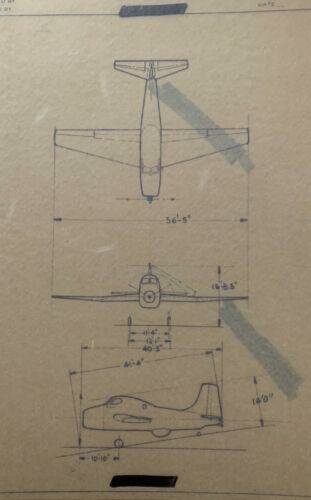
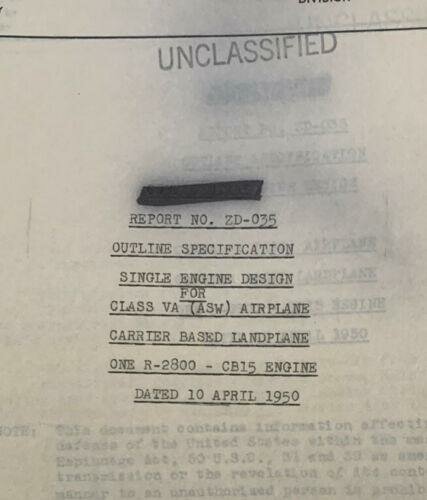
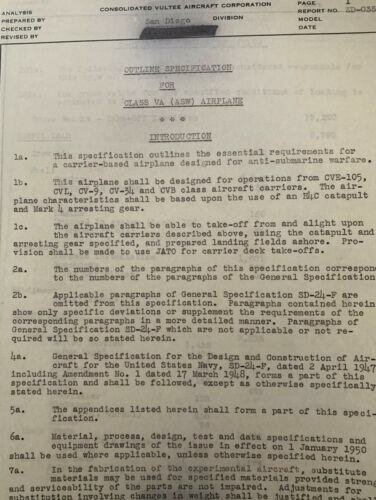
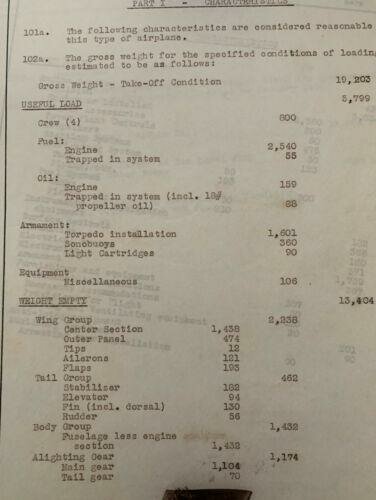
- Joined
- 8 March 2009
- Messages
- 1,055
- Reaction score
- 1,292
Consolidated twin ASW
from; https://www.worthpoint.com/worthopedia/consolidated-vultee-like-s2-carrier-3840375372

from; https://www.worthpoint.com/worthopedia/consolidated-vultee-like-s2-carrier-3840375372
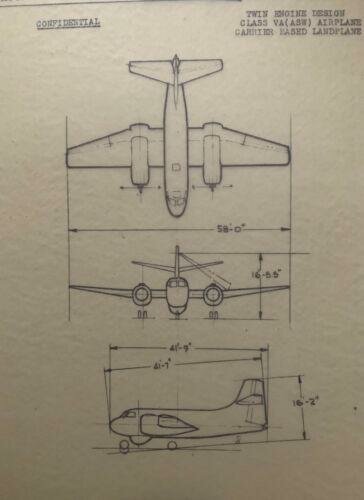
Attachments
Scott Kenny
ACCESS: USAP
- Joined
- 15 May 2023
- Messages
- 11,521
- Reaction score
- 14,092
Surprised that they didn't do something like the Grumman Sto-wing fold-and-turn so the wings are parallel to the fuselage. They'd have had to license it, as the patents were still good in the late 1940s.Greetings All -
A couple of images, courtesy of the Vought Archives, of the XWU-1 mock up. The one image is a larger copy of an earlier image in this thread.
Enjoy the Day! Mark
Similar threads
-
US Navy Outline Specification OS-112
- Started by Stargazer
- Replies: 23
-
REQUIREMENT: US Navy VFA - V/STOL Fighters for Sea Control Ships
- Started by overscan (PaulMM)
- Replies: 5
-
'Demon' to 'Phantom' - the evolution of McDonnell's F-4 Phantom II
- Started by Archibald
- Replies: 38
-
Martin 313 Submaster (XP7M-1): Open Ocean ASW Seaplane
- Started by Stargazer
- Replies: 13
-
The (rigged?) ACEVAL/AIMEVAL air combat evaluations 1975 -1978
- Started by overscan (PaulMM)
- Replies: 29

